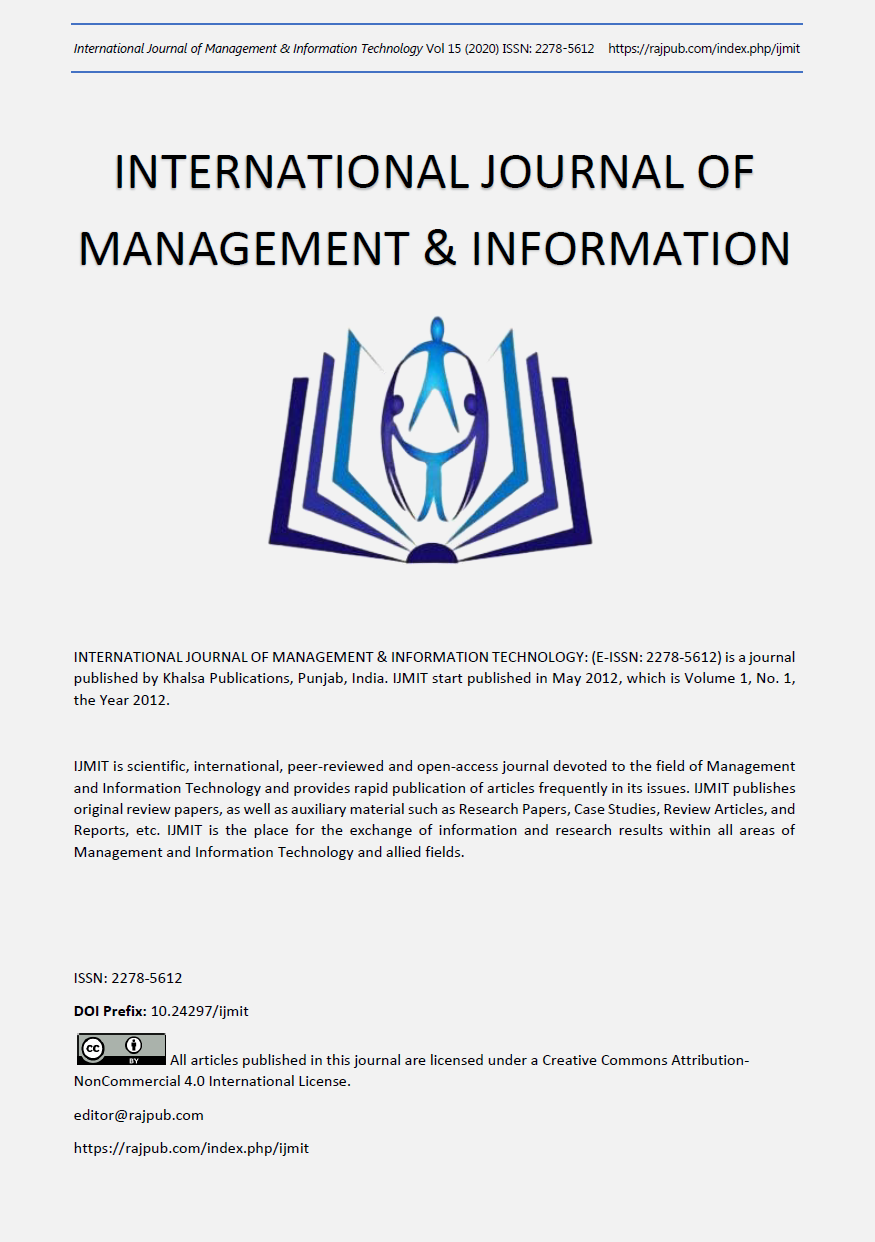Investors’ Attention and its effect on Saudi Stock Returns
DOI:
https://doi.org/10.24297/ijmit.v15i.8684Keywords:
Attention, Google Trends, Investors, Search VolumeAbstract
The study examines the individual investor's intention effect of attention-grabbing stocks such as stocks in the news, stock experiencing high abnormal trading, and stocks with high returns. Attention driven trading results from an individual investor's ability to process information when being exposed to a large amount of information. The study includes Google’s Search Volume Index (SVI) as a proxy for investor attention. Thus, preferences of certain stocks determine decision making after attention has determined the selected stock in which trading is increased.
Downloads
References
Barber, B. M., & Odean, T. (2008). All that glitters: The effect of attention and news on the buying behavior of individual and institutional investors. The review of financial studies, 21(2), 785-818.
Chang, C. H. (2008). THE IMPACT OF BEHAVIORAL PITFALLS ON INVESTORS'DECISIONS: THE DISPOSITION EFFECT IN THE TAIWANESE WARRANT MARKET. Social Behavior and Personality: an international journal, 36(5), 617-634.
Da, Z., Engelberg, J., & Gao, P. (2011). In search of attention. The Journal of Finance, 66(5), 1461-1499.
Epstein, L. G., & Schneider, M. (2008). Ambiguity, information quality, and asset pricing. The Journal of Finance, 63(1), 197-228.
Fama, E. F. (1965). The behavior of stock-market prices. The journal of Business, 38(1), 34-105.
Fama, E. F. (1965). Portfolio analysis in a stable Paretian market. Management science, 11(3), 404-419.
Fischer, R., & Gerhardt, R. (2007, August). Investment mistakes of individual investors and the impact of financial advice. In 20th Australasian Finance & Banking Conference.
Haddad, M., & Hakim, S. (2008). Irrational exuberance on the Saudi stock exchange. In ERF Conference Paper No (Vol. 152008051).
Hirshleifer, D. (2001). Investor psychology and asset pricing. The Journal of Finance, 56(4), 1533-1597.
Joseph, K., Wintoki, M. B., & Zhang, Z. (2011). Forecasting abnormal stock returns and trading volume using investor sentiment: Evidence from online search. International Journal of Forecasting, 27(4), 1116-1127.
Kahneman, D. 1973Attention and effort.
Kahneman, D., & Tversky, A. (2013). Prospect theory: An analysis of decision under risk. In Handbook of the fundamentals of financial decision making: Part I (pp. 99-127).
Karpoff, J. M. (1987). The relation between price changes and trading volume: A survey. Journal of Financial and quantitative Analysis, 22(1), 109-126.
Odean, T. (1999). Do investors trade too much?. American economic review, 89(5), 1279-1298.
Pashler, H., Johnston, J. C., & Ruthruff, E. (2001). Attention and performance. Annual review of psychology, 52(1), 629-651.
Peng, L., & Xiong, W. (2006). Investor attention, overconfidence and category learning. Journal of Financial Economics, 80(3), 563-602.
Samargandi, N., Fidrmuc, J., & Ghosh, S. (2014). Financial development and economic growth in an oil-rich economy: The case of Saudi Arabia. Economic Modelling, 43, 267-278.
Seasholes, M. S., & Wu, G. (2007). Predictable behavior, profits, and attention. Journal of Empirical Finance, 14(5), 590-610.
Vlastakis, N., & Markellos, R. N. (2012). Information demand and stock market volatility. Journal of Banking & Finance, 36(6), 1808-1821
Downloads
Published
How to Cite
Issue
Section
License
 All articles published in Journal of Advances in Linguistics are licensed under a Creative Commons Attribution 4.0 International License.
All articles published in Journal of Advances in Linguistics are licensed under a Creative Commons Attribution 4.0 International License.








